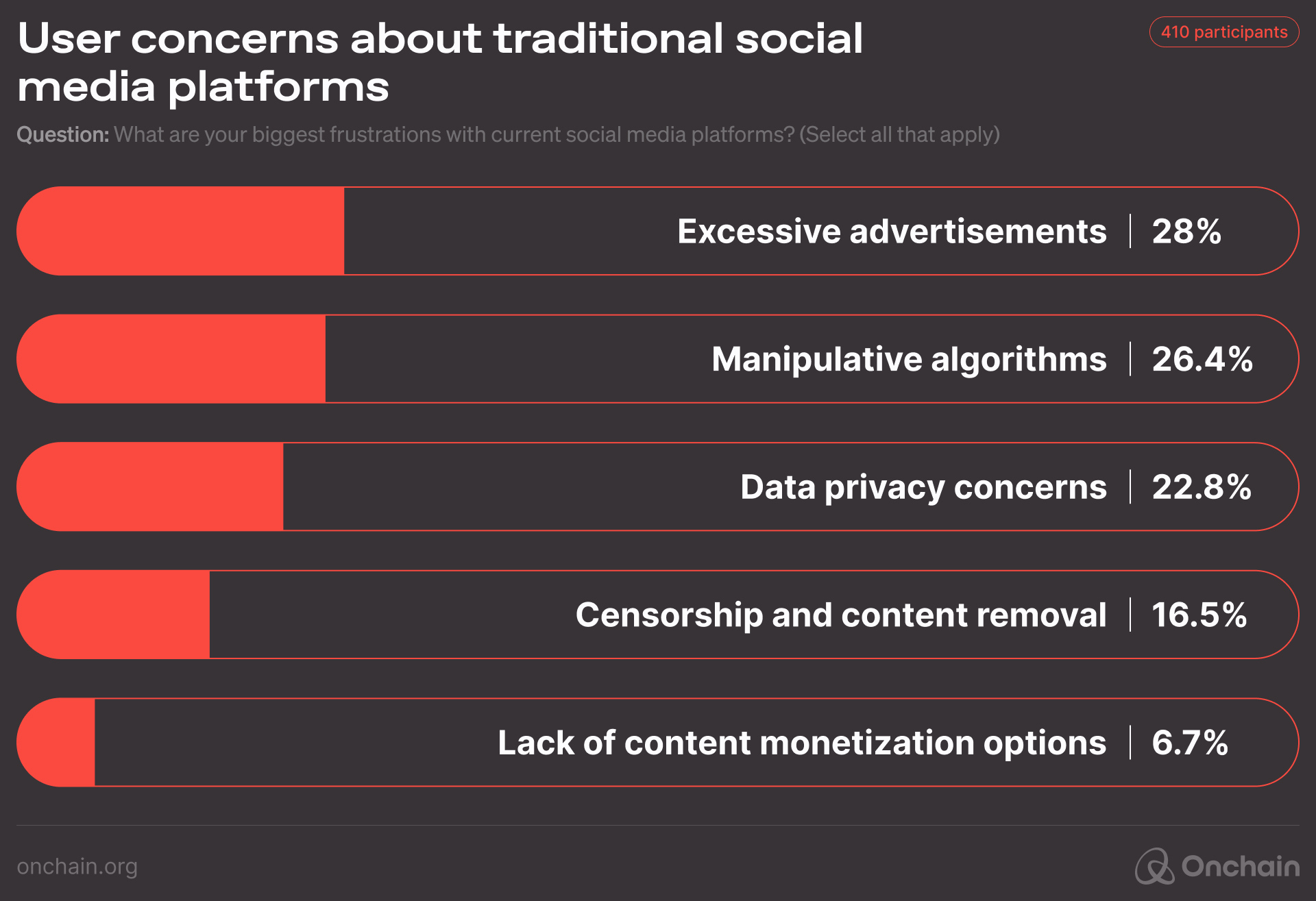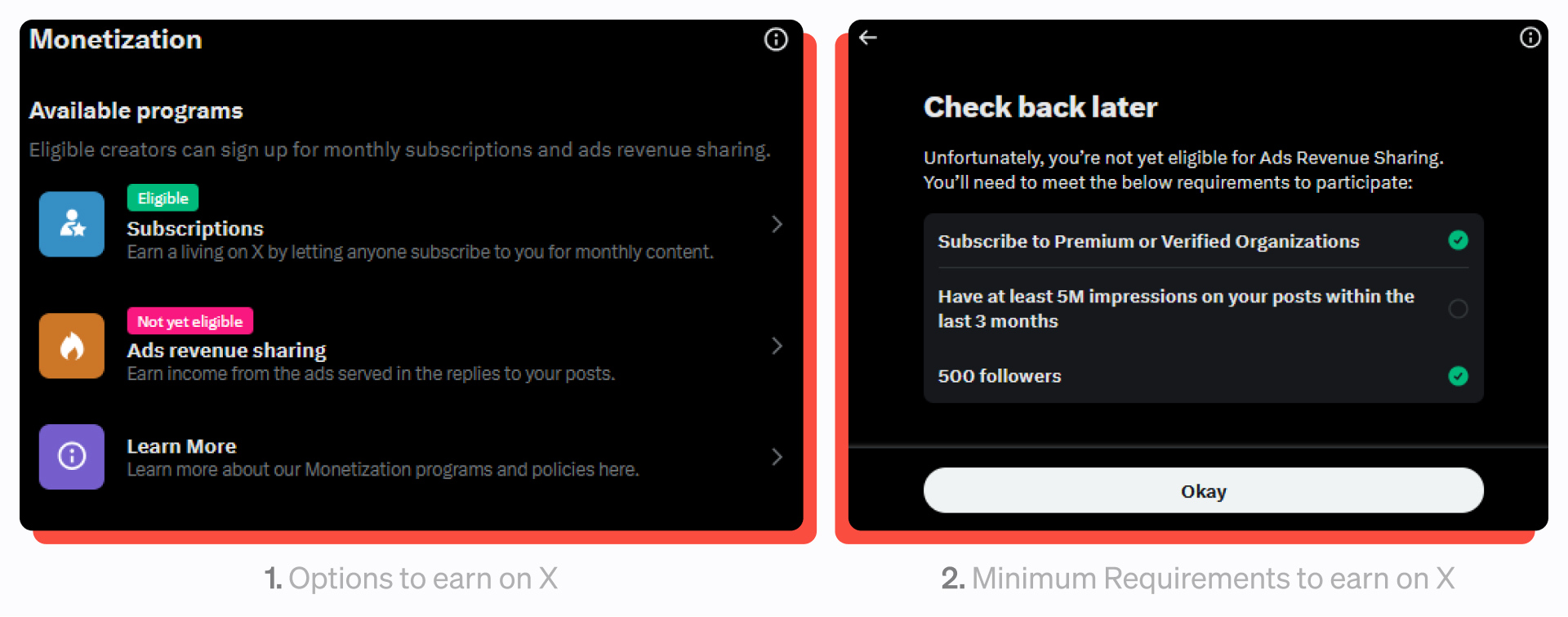Imagine building an audience of thousands – or even millions – only to wake up and find that your social media account has been shut down. A nightmare scenario, right? 😱
Your business depends on this platform for engagement, community building, and even sales, but overnight, your access is gone. This isn’t just a hypothetical scenario. In 2024, X (formerly Twitter) got banned in Brazil, and Telegram’s CEO, Pavel Durov, faced legal trouble in France over content shared by users.
Relying on centralized platforms can lead to major financial losses and operational chaos for creators, startups, and businesses when disruptions occur. The risks are clear: if you depend on centralized platforms, your audience, content, and revenue streams are vulnerable to sudden policy changes, government intervention, or decisions made without your consent.
As these pressures increase, more entrepreneurs and creators are realizing the fragility of these ecosystems. Decentralized Social Media (DeSoc) platforms offer an alternative that provides more control, transparency, and resilience against such disruptions.
The hidden risks of traditional social media (TradSoc)
Traditional social media networks now serve over 5.07 billion users, representing 62.6% of the global population.
They are expected to generate $251.45 billion in revenue by the end of 2024, with $226.73 billion coming from advertising.
However, the incredible growth of these platforms has come at a cost to users, creators, and businesses, exposing several cracks in their centralized foundation.
Dominant platforms decide what content is seen and what is hidden, wielding significant influence over public discourse and personal expression.
Large platforms have the power to suppress or promote content based on their own agendas, often stifling free speech and limiting the diversity of viewpoints.
While platforms generate significant advertising revenue, the creator’s share is often small. For example, YouTube’s 55/45 ad revenue split leaves creators with less than half of the earnings their content generates, while Meta’s cut can sometimes reach 100% in certain cases.
If you want to learn more about the different take rates of TradSoc and how they compare to DeSoc, check out this article on DeSoc business models.
User frustration is rising
A recent survey conducted by the Onchain Research Team confirms that the structural issues of TradSoc platforms are not just theoretical – they are deeply felt by users. The survey gathered insights from 410 participants, all demographically diverse and active users of popular social media platforms, focusing on their challenges with traditional social media and their motivations for exploring decentralized alternatives. The findings underscore the growing dissatisfaction with centralized platforms.

Note: Percentages are based on total responses, not the total number of survey participants. Participants could select multiple concerns.
The growing dissatisfaction with centralized platforms is fueling interest in DeSoc, where users have greater control over their online experience, from privacy to monetization.
Why DeSoc is gaining ground
Rather than concentrating power in the hands of platform owners, DeSoc platforms leverage distributed ledger technology like blockchain to distribute control across a network of users. This shift brings several benefits, especially in areas where TradSoc platforms face criticism.
Some of the main advantages include:
- Data Ownership
- Fairer monetization
- Censorship resistance
Monetization: TradSoc vs. DeSoc
The differences between TradSoc and DeSoc become distinctly evident in monetization. Traditional platforms are introducing revenue-sharing models. However, the barriers to entry remain high.
X’s ad revenue program, for instance, requires at least 5 million impressions in three months, locking out the majority from the creator economy.

In contrast, decentralized platforms like Warpcast, built on the Farcaster protocol, make monetization more accessible and fair.
The top 100 creators by engagement can earn 5 USDC daily, with scores adjusted for follower count to ensure beginning users have a fair chance.
Payments are instant and sent directly to users’ wallets, offering faster and fairer rewards compared to TradSoc’s slow, restrictive models.

Case study: Warpcast – an example of DeSoc innovation
Warpcast is a prime example of how DeSoc platforms are reshaping the social media landscape. Farcaster provides decentralized infrastructure, while Warpcast offers a user-friendly interface for creators and businesses looking to tap into the Web3 space.
Key features that make DeSoc projects like Warpcast stand out:
1. Direct Payments: Warpcast’s Paybot allows users to send and receive payments instantly within the platform. This feature enables creators to be compensated directly for their content, bypassing intermediaries and platform commissions.
2. Data Monetization: Warpcast’s “Data for Sale” feature lets users sell valuable text-based content, like trading tips, directly to followers. This cuts out intermediaries and creates new revenue streams for creators.
These features are just examples of what’s possible. What truly sets DeSoc platforms apart – whether it’s Farcaster, OpenSocial, DSCVR, or Lens – is their open protocol structure.
This openness allows Web3 founders to integrate a wide range of decentralized applications (dApps) and services, creating endless possibilities for customization and growth. Whether it’s NFT and token minting, building dApp integrations, or creating tokenized communities, DeSoc platforms offer entrepreneurs a flexible foundation for innovation.
For instance, the Polymarket dApp can be seamlessly integrated into a DeSoc platform, enabling creators to host live prediction markets or events directly within the platform.
We recently published an entire article on how Polymarket became the go-to source for predicting the future.
For creators and users, this level of flexibility means the rigid structures of traditional platforms do not limit you. Instead, you can build, scale, and customize your project in an open ecosystem, engaging a Web3-native audience that is probably highly aligned with the core values of your business.
The future of social media: Can traditional platforms keep up?
While DeSoc platforms are gaining traction, Web2 giants like Telegram, Discord, and X are making strategic moves to integrate Web3 features. However, the depth of their Web3 integration varies.
Telegram has taken one of the boldest steps, integrating the TON blockchain and a Web3 wallet directly into its messenger app. This allows users to send crypto, pay for real-world services like taxis via apps like Tada (available in Singapore and other countries in Southeast Asia), and even play blockchain-based games like Hamster Kombat – without ever leaving the platform. Discord has also integrated token-gated channels, allowing NFT holders to access exclusive content and private communities.These moves show that Web2 platforms recognize the growing demand for Web3 features and are willing to adapt. However, they still operate within centralized frameworks, which means users don’t have full ownership of their data or content.
Nevertheless, this raises a significant challenge for genuine DeSoc that offer true decentralization. Web2 giants like Telegram and Discord have a substantial advantage in terms of network effects. Millions of daily active users are already on these platforms.
Without the same built-in user base, achieving mass adoption is an uphill battle for DeSoc platforms. DeSoc may provide superior transparency, fairer monetization, and greater user control, but scaling to reach a mainstream audience will take time.
There’s also the possibility that DeSoc platforms could remain niche, catering primarily to Web3 enthusiasts unless they find a way to bridge the gap and attract broader adoption.
Why a hybrid strategy is essential for Web3 entrepreneurs
For Web3 founders and entrepreneurs, the best path forward may be to adopt a hybrid strategy.
Why do we think that?
Getting in early on DeSoc platforms offers a big payoff. As these platforms expand, you can tap into growing user bases, potentially earning valuable rewards like airdrops or tokens.
Plus, by experimenting with Web3 features like NFTs, tokenized communities, and decentralized payments, you’ll gain a competitive edge, mastering tools that may soon become mainstream.
At the same time, traditional social networks obviously still provide unparalleled reach. While they’re dabbling in Web3 features, they will always lack the true decentralization DeSoc offers. With DeSoc, you can build thriving communities, integrate dApps, and unlock new monetization streams that simply aren’t possible in Web2.
That’s a compelling case for community building. In the next article in this Learning Track, you’ll learn just how DeSoc is changing communities for the better — and how you can leverage that engagement for your business. Hit the arrow below to learn more.



